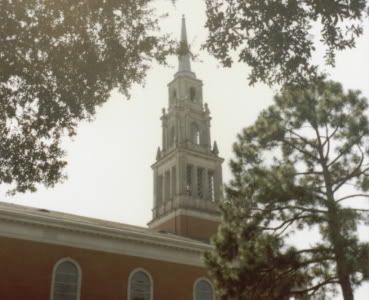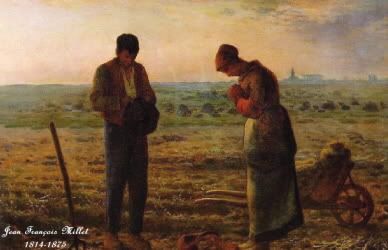
The great steeple of the First Baptist Church of Shreveport, LA.
I have to admit, I have always had a fondness for church steeples. As a young child at First Baptist church and school in Shreveport, LA, I could look up to the gigantic steeple from anywhere on the sprawling campus. It seemed to call to me like a beacon of hope from above. It was a constant reminder and witness of something greater than myself.
The church steeple is probably the one architectural feature that sets a church building apart more than any other in this country. When crossing one of the bridges in Milwaukee during seminary, I could see hundreds of steeples from all over the city sticking up above the horizon. A steeple is a tall ornamental structure on church or cathedral. It is a tower, composed of a series of stories, diminishing in size, and topped by a tall pyramid, called a cupola or spire (meaning “a stalk” or “shoot”). Sometimes an open lantern was interposed between the steeple tower and the spire. It was almost like a lighthouse on the land.
A spire properly belongs to pointed architecture and hence has never been fully developed except in Gothic buildings. Timber spires of the early Middle Ages were, as a rule, not very tall, but later they reached a greater elevation; that which crowned old St. Paul’s in London is said to have been 527 feet in height. The loftiest spires now in existence (such as those of Salisbury, Coventry, and Norwich) are all of stone. In central England there are many, where suitable stone was easily obtainable. In the north of England, however, in Scotland, and in Wales among the mountains the bell-gable took the place of a spire, for the thinly populated parishes made it necessary to keep the bells uncovered, so that they might be more widely heard.
The middle part of a large steeple’s tower often contains a carillon, which is a musical instrument composed of at least 23 bells, arranged in chromatic sequence, so tuned as to produce concordant harmony when many bells are sounded together. It is played from a kind of keyboard where the keys are struck with the half-closed fist. The world’s greatest concentration of carillons is still in the low countries of Europe. Nearly 200 exist in North America.
I think the steeple speaks to me because it is a symbol of the Christian believer in the world. A stone church can be a lasting example for the human church—the People of God. Like a steeple, the Christian should point to heaven, being a constant reminder of the joys of heaven and the watchful eye of God. Like a steeple, the Christian should be looked up to by others for hope and inspiration—even lighting the way for others through a dark night by the lantern within it. Like a steeple, the Christian should stand tall in the community, and be instantly recognizable as the temple of the Holy Spirit. Like a steeple, the Christian should make beautiful music and call other believers to prayer, as depicted in the beautiful painting “Angelus” by Jean-Francois Millet. In this painting, a husband and wife are out working in the field, when they stop and bow their heads in prayer at the signal of church bells sounding from a steeple in the distance. Let us resolve to stand tall like steeples as Christ’s disciples in Arlington.

“Angelus” by Jean-Francois Millet.


1 comment:
The church bells would always ring at noon at FBC. I loved that.
Post a Comment